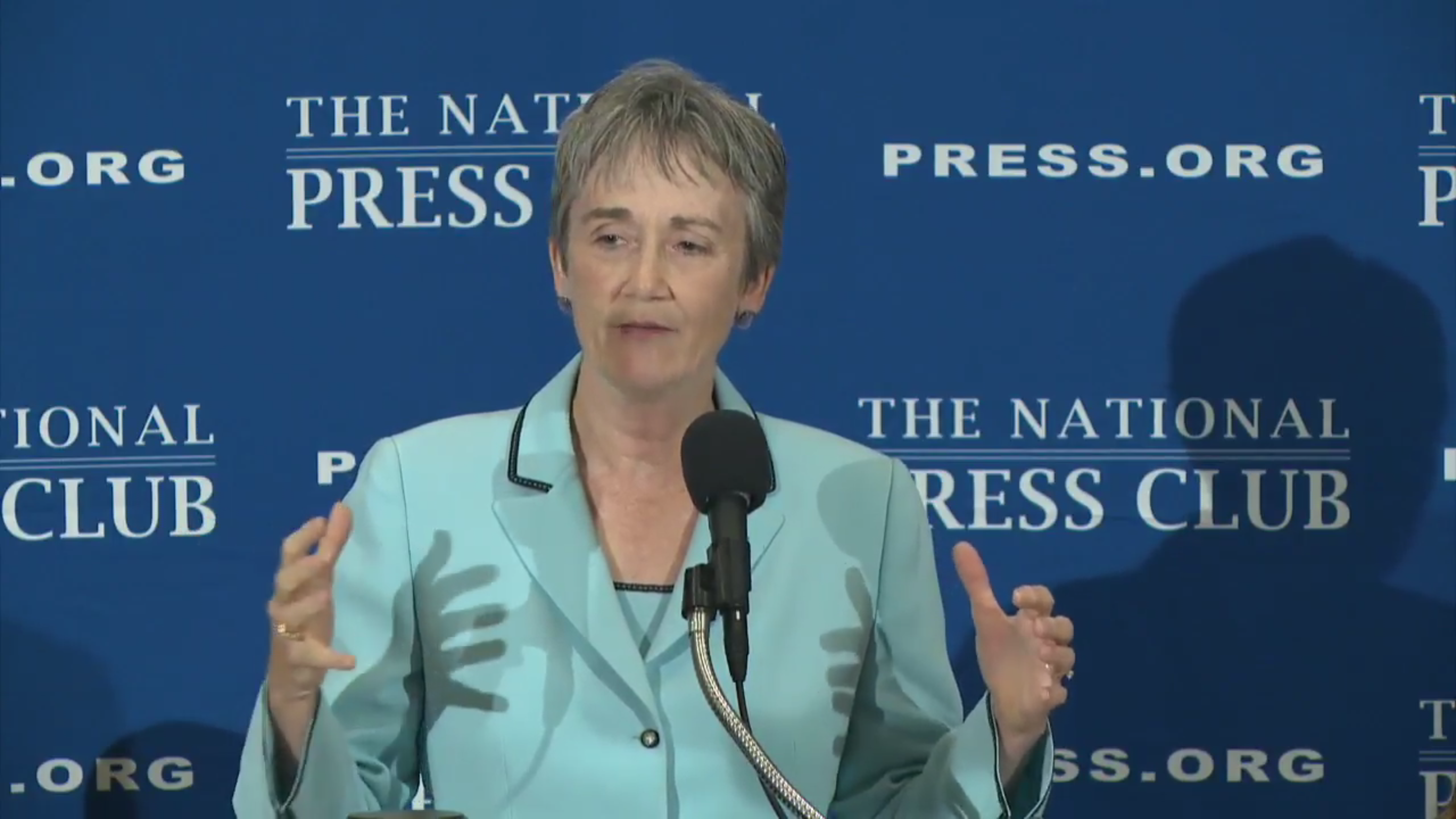
Air Force Secretary Heather Wilson addresses a National Press Club luncheon in Washington Wednesday.
Senior military leaders will have to meet a series of important deadlines in the coming weeks, as planning for the creation of a sixth military service dedicated solely to space gains momentum, according to an internal memo from Deputy Defense Secretary Patrick Shanahan dated Sept. 10.
Air Force Magazine obtained a copy of the unclassified but “for official use only” memo the same day Air Force Secretary Heather Wilson lauded President Trump’s actions in giving National Security Space issues increased prominence.
The Shanahan memo directs the military service Secretaries, the Chairman of the Joint Chiefs of Staff, and the Office of the Secretary of Defense and DOD component heads to take specific actions to establish the Space Force.
The Chief Management Officer is to come up with a plan to establish a new Assistant Secretary of Defense for Space and the Special Assistant for White House Liaison Office is to start identifying potential candidates for the post, with an interim progress review due to a new Space Governance Committee, being set up to oversee establishment of the Space Force, by Oct. 1.
The Chairman of the Joint Chiefs of Staff is in charge of the push to reestablish a unified combatant command for space, which the memo says should stand up by the end of this year. The Joint Staff, which has been tasked with developing a plan to move authorities and capabilities to US Space Command, must provide an interim progress review to the Space Governance Committee by Sept. 30.
The memo directs the Chairman of the Joint Chiefs of Staff to work with the service Secretaries and the Under Secretary of Defense for Personnel and Readiness to produce an inventory of space operations-related forces and functions, while the Under Secretary is to come up with an approach to managing DOD space personnel. The Joint Staff is to produce an interim progress review by Oct. 1, which will include a recommend target date for initial operational capability in calendar 2019.
The legislative proposal to set up the Space Force, including its roles and mission, structural options, responsibilities, relationship with the US Space Command, and a “lean headquarters model to avoid growing unnecessary bureaucracy,” is to be submitted to the Office of Management and Budget by Dec. 1, although an interim progress review is due to the Space Governance Committee by Oct. 15.
Meanwhile, an interim progress review on preparing the Space Force budget for the administration’s Fiscal Year 2020 budget request and the five-year Future Years Defense Program is due Oct. 15.
The Undersecretary of Defense for Research and Engineering and the Air Force Secretary are directed to develop concepts for the proposed Space Development Agency, which will support new product development. Draft concepts were due Sept. 14, according to the memo.
In Wilson’s Sept. 14 memo, she pushed for the Air Force to maintain at least a portion of the overall space portfolio, saying the service’s Rapid Capabilities Office “was already given special authorities and exemptions by Congress to rapidly develop space capabilities” and the creation of a new Space Development Agency is not necessary.
In its own policy statement issued on Wednesday, the Air Force Association questioned whether the agency would “add any real value” to space procurement. “Existing defense agencies have certainly not been models of efficiency and innovation. Applying rapid acquisition concepts to space systems would be a more direct approach to accelerating the fielding of new space systems,” according to the AFA statement.
However, Wilson, during a speech to the National Press Club in Washington on Wednesday, praised Trump’s actions in promoting the Space Force concept.
“It is my view the President has brought space into the spotlight,” she said. “He’s made it kitchen table conversation, and that benefits this country.”